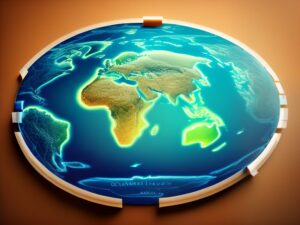Throughout human history, conflict and war have been a recurring theme. From ancient civilizations to modern societies, humans have engaged in violent conflicts for various reasons. These conflicts have shaped the course of history, leading to the rise and fall of empires, the redrawing of borders, and the loss of countless lives. Understanding the factors that drive human conflict is crucial in order to find ways to prevent and resolve conflicts in the future.
The Biological and Evolutionary Roots of Aggression
Aggression is a natural human behavior that has deep biological and evolutionary roots. It is a survival mechanism that has been ingrained in our DNA over millions of years. In the early stages of human evolution, aggression was necessary for hunting and protecting oneself from predators. It allowed our ancestors to compete for resources and ensure their survival.
Furthermore, aggression served as a means of establishing dominance within social groups. In order to secure their place in the hierarchy, individuals had to display aggression towards others. This behavior was reinforced through natural selection, as those who were more aggressive were more likely to pass on their genes.
The Psychological Factors That Drive Conflict
While aggression may be a natural human behavior, it is often psychological factors that drive conflict and escalate it into violence. Fear, anger, and frustration are some of the key psychological factors that contribute to conflict. When individuals feel threatened or perceive an injustice, they may respond with aggression as a means of self-defense or retaliation.
Fear plays a significant role in conflict escalation. When individuals feel threatened by an external force or perceive a threat to their identity or way of life, they may resort to violence as a means of protection. Anger can also fuel conflict, as individuals may become enraged by perceived injustices or offenses. Frustration can arise when individuals are unable to achieve their goals or meet their needs, leading to aggression as a means of venting their frustration.
The Role of Power and Resources in War
Power and resources have long been driving forces behind conflict and war. Throughout history, nations and empires have fought over territory, wealth, and resources. The desire for power and control has led to countless conflicts, as those in positions of power seek to expand their influence and secure their dominance.
One example of a conflict driven by power and resources is the colonization of Africa by European powers in the 19th century. European nations sought to exploit Africa’s vast resources, such as rubber, diamonds, and gold, leading to a scramble for territory and the subjugation of African peoples. This desire for power and resources resulted in widespread violence and oppression.
The Influence of Ideology and Beliefs on Human Conflict
Ideology and beliefs can also play a significant role in driving conflict and war. Throughout history, religious, political, and ideological differences have led to violent conflicts. When individuals hold strong beliefs or ideologies, they may be willing to fight and die for their cause.
One example of a conflict driven by ideology is the Cold War between the United States and the Soviet Union. The ideological differences between capitalism and communism fueled a decades-long standoff between the two superpowers. Both sides believed that their ideology was superior and sought to spread their influence around the world, leading to proxy wars and conflicts in various regions.
The Impact of Social and Cultural Factors on War

Social and cultural factors can also contribute to conflict and war. In many societies, social divisions based on ethnicity, religion, or class can create tensions that lead to violence. Cultural differences can also play a role in fueling conflict, as individuals may view those from different cultures as a threat or as inferior.
One example of a conflict driven by social and cultural factors is the Rwandan genocide in 1994. The Hutu majority viewed the Tutsi minority as a threat to their social and political dominance. This deep-seated ethnic tension, fueled by years of social and political divisions, led to a mass slaughter in which an estimated 800,000 people were killed.
The Role of Technology and Innovation in Modern Warfare
Technology and innovation have greatly changed the nature of warfare. From the invention of gunpowder to the development of nuclear weapons, advancements in technology have made conflicts more deadly and destructive. The ability to inflict mass casualties from a distance has increased the scale and intensity of warfare.
However, the ethical implications of modern warfare technology cannot be ignored. The use of drones, for example, raises questions about the morality of remote-controlled killing. The development of autonomous weapons systems also raises concerns about the potential for machines to make life-or-death decisions without human intervention.
The Globalization of Conflict and the Rise of Non-State Actors
Globalization has changed the nature of conflict and war. In the past, conflicts were primarily between nation-states. However, in recent years, non-state actors such as terrorist organizations have emerged as significant players in global conflicts. These groups operate across borders and use asymmetric tactics to challenge established powers.
The rise of non-state actors has made it more difficult to address conflicts through traditional means. Their decentralized nature and ability to blend in with civilian populations make them difficult to combat. Additionally, their use of unconventional tactics such as suicide bombings and cyber warfare poses unique challenges for traditional military forces.
The Challenges of Conflict Resolution and Peacebuilding
Conflict resolution and peacebuilding are complex processes that face numerous challenges. One of the main challenges is overcoming deep-rooted grievances and addressing the underlying causes of conflict. This requires addressing issues such as inequality, injustice, and historical grievances that may have fueled the conflict.
Another challenge is building trust between conflicting parties. In many cases, there is a lack of trust between parties due to past violence or perceived injustices. Rebuilding trust requires open dialogue, transparency, and a commitment to addressing the concerns and needs of all parties involved.
Breaking the Cycle of War
Breaking the cycle of war is crucial for the future of humanity. The devastating consequences of war, both in terms of human lives lost and the destruction of societies, make it imperative that we find ways to prevent and resolve conflicts peacefully.
Individuals can play a role in breaking the cycle of war by promoting peacebuilding and conflict resolution in their communities. This can be done through education, dialogue, and fostering understanding between different groups. By addressing the root causes of conflict and working towards peaceful solutions, we can create a more peaceful and just world for future generations.
If you’re interested in exploring the connection between war and technology, you might find the article on personal humanoid robots from AITV.Media intriguing. This piece delves into how advancements in robotics have the potential to reshape warfare and its impact on humanity. From autonomous soldiers to AI-driven decision-making, these developments raise important ethical questions about the future of conflict. To gain a deeper understanding of the role technology plays in journalism, you can also check out the article on leveraging AI and other technologies for better journalism. Lastly, if you’re concerned about the effects of severe weather events on global security and conflicts, AITV.Media offers an insightful article on this topic as well.



